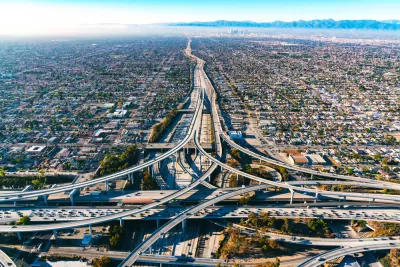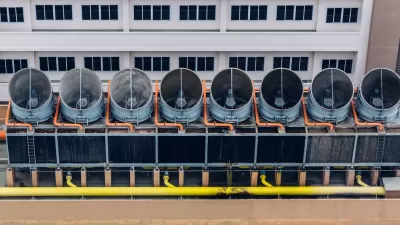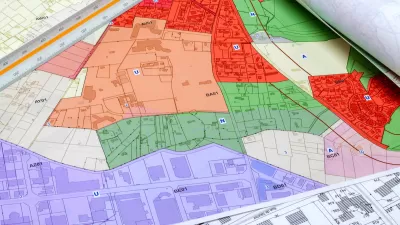The auto-centric development patterns of American cities are a result of decades of misguided, but reversible, policy decisions.

The sprawl that characterizes many modern cities doesn’t have to continue to define them, argues Jocelyn Timperley. “As the world struggles to undo unsustainable systems, as well as the growing inequality between the rich and the poor, cities are making their way back into the spotlight as potential solutions—and missteps.”
Sprawl, as defined in the article by “low-density housing, segregated land uses (meaning housing is separated from shops, workplaces, schools and leisure activities), a lack of local town centers, and limited street connectivity,” increases carbon emissions from transportation and large, single-family homes with bigger carbon footprints. Reid Ewing, professor of city and metropolitan planning at the University of Utah, estimates that “more compact development in the US would lead to a 7 to 10 percent reduction in total transportation carbon dioxide emissions (the largest source of emissions by sector in the US) by 2050, compared to continuing urban sprawl.” Meanwhile, “As of 2015, a single-family detached home in the US used around three times as much energy as an apartment in a building of five or more different units.”
Timperley outlines the history of sprawl in the United States, from its beginnings in early 20th century zoning codes to the suburban boom of the post-World War II era, and how infrastructure spending perpetuates car-centric development.
The article goes on to offer a range of solutions, from relatively inexpensive fixes like crosswalks and bike lanes to major public transit projects and zoning reforms.
FULL STORY: Urban sprawl defines unsustainable cities, but it can be undone

Study: Maui’s Plan to Convert Vacation Rentals to Long-Term Housing Could Cause Nearly $1 Billion Economic Loss
The plan would reduce visitor accommodation by 25,% resulting in 1,900 jobs lost.

North Texas Transit Leaders Tout Benefits of TOD for Growing Region
At a summit focused on transit-oriented development, policymakers discussed how North Texas’ expanded light rail system can serve as a tool for economic growth.

Why Should We Subsidize Public Transportation?
Many public transit agencies face financial stress due to rising costs, declining fare revenue, and declining subsidies. Transit advocates must provide a strong business case for increasing public transit funding.

How to Make US Trains Faster
Changes to boarding platforms and a switch to electric trains could improve U.S. passenger rail service without the added cost of high-speed rail.

Columbia’s Revitalized ‘Loop’ Is a Hub for Local Entrepreneurs
A focus on small businesses is helping a commercial corridor in Columbia, Missouri thrive.

Invasive Insect Threatens Minnesota’s Ash Forests
The Emerald Ash Borer is a rapidly spreading invasive pest threatening Minnesota’s ash trees, and homeowners are encouraged to plant diverse replacement species, avoid moving ash firewood, and monitor for signs of infestation.
Urban Design for Planners 1: Software Tools
This six-course series explores essential urban design concepts using open source software and equips planners with the tools they need to participate fully in the urban design process.
Planning for Universal Design
Learn the tools for implementing Universal Design in planning regulations.
City of Santa Clarita
Ascent Environmental
Institute for Housing and Urban Development Studies (IHS)
City of Grandview
Harvard GSD Executive Education
Toledo-Lucas County Plan Commissions
Salt Lake City
NYU Wagner Graduate School of Public Service





























